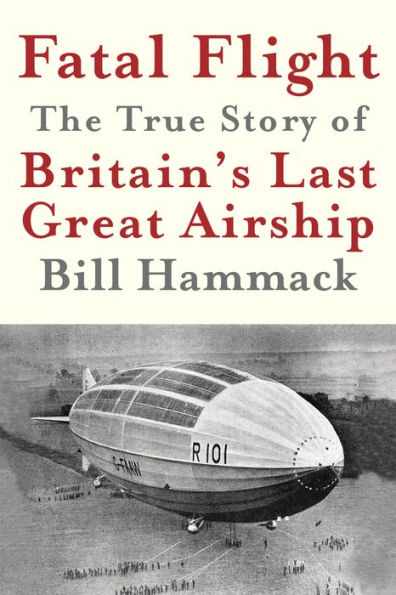Fatal Flight brings vividly to life the year of operation of R.101, the last great British airship -- a luxury liner three and a half times the length of a 747 jet, with a spacious lounge, a dining room that seated fifty, glass-walled promenade decks, and a smoking room. The British expected R.101 to spearhead a fleet of imperial airships that would dominate the skies as British naval ships, a century earlier, had ruled the seas. The dream ended when, on its demonstration flight to India, R.101 crashed in France, tragically killing nearly all aboard.
Combining meticulous research with superb storytelling, Fatal Flight guides us from the moment the great airship emerged from its giant shed -- nearly the largest building in the British Empire -- to soar on its first flight, to its last fateful voyage. The full story behind R.101 shows that, although it was a failure, it was nevertheless a supremely imaginative human creation. The technical achievement of creating R.101 reveals the beauty, majesty, and, of course, the sorrow of the human experience.
The narrative follows First Officer Noel Atherstone and his crew from the ship's first test flight in 1929 to its fiery crash on October 5, 1930. It reveals in graphic detail the heroic actions of Atherstone as he battled tremendous obstacles. He fought political pressures to hurry the ship into the air, fended off Britain's most feted airship pilot, who used his influence to take command of the ship and nearly crashed it, and, a scant two months before departing for India, guided the rebuilding of the ship to correct its faulty design. After this tragic accident, Britain abandoned airships, but R.101 flew again, its scrap melted down and sold to the Zeppelin Company, who used it to create LZ 129, an airship even more mighty than R.101 -- and better known as the Hindenburg.
Set against the backdrop of the British Empire at the height of its power in the early twentieth century, Fatal Flight portrays an extraordinary age in technology, fueled by humankind's obsession with flight.
Advance Reviews
"A fascinating story, not nearly well enough known on the American side of the Atlantic, artfully and engagingly told." G.J. Meyer New York Times bestselling author of A World Undone: The Story of the Great War 1914 to 1918 & The World Remade: America in World War I
"Why does brilliant vehicle design sometimes end in tragedy? The crash of the intended flagship of the British Empire, the magnificent dirigible R.101, is not only an absorbing human and technical story as told by Bill Hammack. It is also a vital lesson in the risks of even apparently small compromises and unforeseen hazards to big projects when confronted by the forces of nature. Impressively documented, Fatal Flight should be required reading for engineers and political leaders alike." Edward Tenner Author of international bestseller Why Things Bite Back & Our Own Devices
"A well-researched and gripping look at Britain's greatest airship disaster from a new perspective: through the eyes of a man who built, flew, and died with the ship." Dan Grossman, Airship Historian author of airships.net and coauthor of Zeppelin Hindenburg: An Illustrated History of LZ-129



